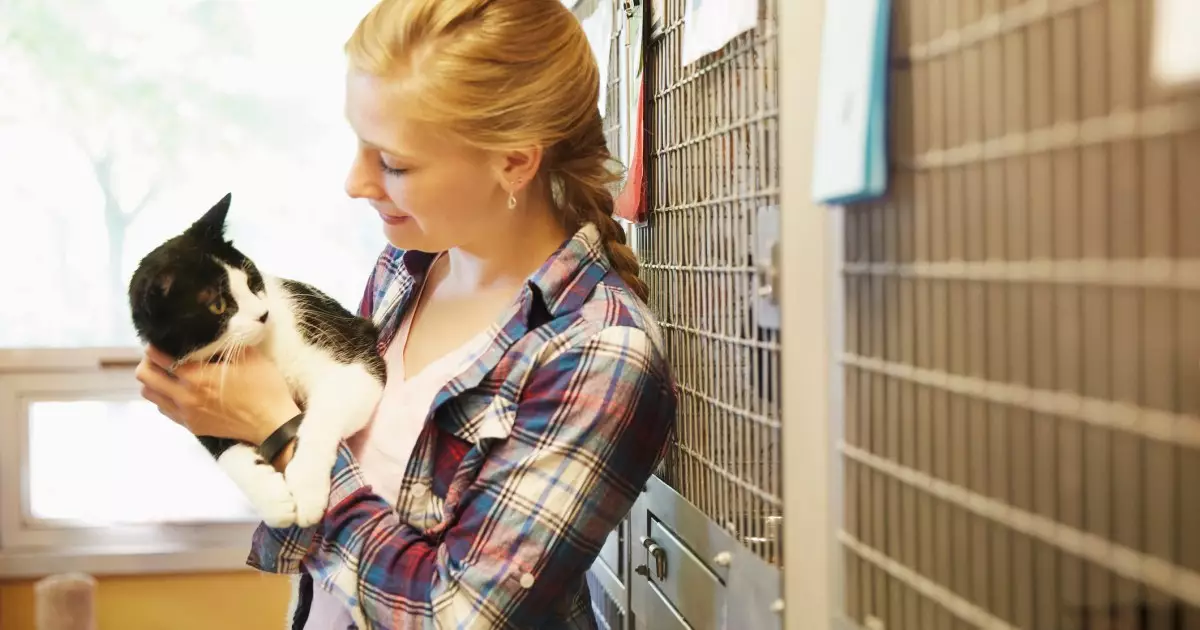In a world driven by metrics and predefined roles, it is all too common for individuals passionate about unconventional pursuits—such as animal welfare—to feel marginalized or even ridiculed. This often stems from a cultural hierarchy that places human-centered occupations, such as teaching and healthcare, on a pedestal above what some may consider “less essential” work. A striking conversation with a therapist, for instance, exposed the pervasive belief that volunteering for animal care diminishes the perceived importance of other noble professions. This striking discourse raises a profound question: should our societal value system prioritize one form of altruism over another? Most assuredly, the answer lies in recognizing that compassion can take on many forms, each playing a vital role in the broader tapestry of humanity.
Volunteering at animal shelters is not merely an act of kindness; it is a commitment to creating tangible change in the lives of creatures who depend on human compassion. While teachers and doctors undoubtedly make invaluable contributions, the work of shelter volunteers fosters a ripple effect of good that enhances both the community and individual well-being. A personal connection to this realm reveals an essential truth: that irrespective of the societal ranking of various professions, every act of goodwill can generate its own unique and profound impact.
Through regular visits to animal shelters, one often experiences a pendulum between upliftment and despair. On days when progress is clear—perhaps a once-timorous canine conjures up the courage to play—there exists an exhilarating sense of triumph. Moments of connection with these animals can forge uniquely rewarding experiences, unveiling the joys of rehabilitation and companionship. However, the emotional weight can also be crushing; witnessing abandonment, neglect, and heartache can lead to overwhelming feelings of helplessness.
It can feel isolating when you carry the burden of these experiences alone. Some days, one may walk away from the shelter feeling utterly drained, struggling to recover from the emotional toll and questioning the overall impact of their efforts. The self-reflection that follows serves as an important lens: while the notion that “you get more than you give” can feel clichéd, the richness of the volunteering experience lies deeper. It can imbue individuals with resilience and a more nuanced understanding of compassion, particularly in challenging moments. This willingness to persist, despite feelings of inadequacy or despair, leads to resilience, encouraging not just personal growth but also a communal ethos of care and empathy.
For animal shelters, the act of volunteering transcends mere support; it significantly influences the well-being and adoptability of the animals. When volunteers provide care, exercise, and social interaction to shelter pets, they enhance these animals’ ability to connect with potential adopters. There is an undeniable correlation between the time spent with volunteers and an animal’s overall demeanor; a happy, well-adjusted dog is much more likely to attract the eyes and hearts of potential families.
Moreover, the volunteers themselves often become advocates for these animals, telling their stories, showcasing their personality, and helping to break down preconceived notions about shelter pets. The enthusiasm and dedication that volunteers exhibit translate into a palpable energy that can positively shift the perception of adoption within the community. As more individuals engage with shelters and experience firsthand the transformations occurring within these spaces, a culture of adoption begins to flourish, creating a beautiful cycle of benevolence.
As beneficial as this experience is for both animals and volunteers, the continued growth of a vibrant adoption culture hinges on consistent community participation. By dedicating time to support animal shelters, individuals can contribute to a structure where compassion fosters tangible outcomes—culminating in happier animals and more fulfilled community members. The idea is simple: the more people who lend a hand at local shelters, the more uplifted and adoptable these animals become.
Furthermore, such efforts can lead to an attractive cycle where successfully adopted animals inspire others to volunteer, perpetuating a sense of social responsibility. By broadening participation in animal welfare initiatives, volunteers help pave the way for increased community awareness, thus ensuring that the needs of voiceless beings remain at the forefront of societal conscience.
Through a lens focused on animal welfare, volunteering reveals itself as an act of profound impact that frequently transcends conventional measures of success. The depth of these experiences, marked by emotional complexity and significant outcomes, serves as a reminder that every effort, big or small, matters. While we may currently find ourselves questioning the value of such contributions, embracing and spreading compassion in all its forms can lead to transformative results. In doing so, we not only uplift the lives of the animals we serve but also enrich our own, unearthing a shared purpose in the quest for betterment—both for our communities and ourselves.


Leave a Reply